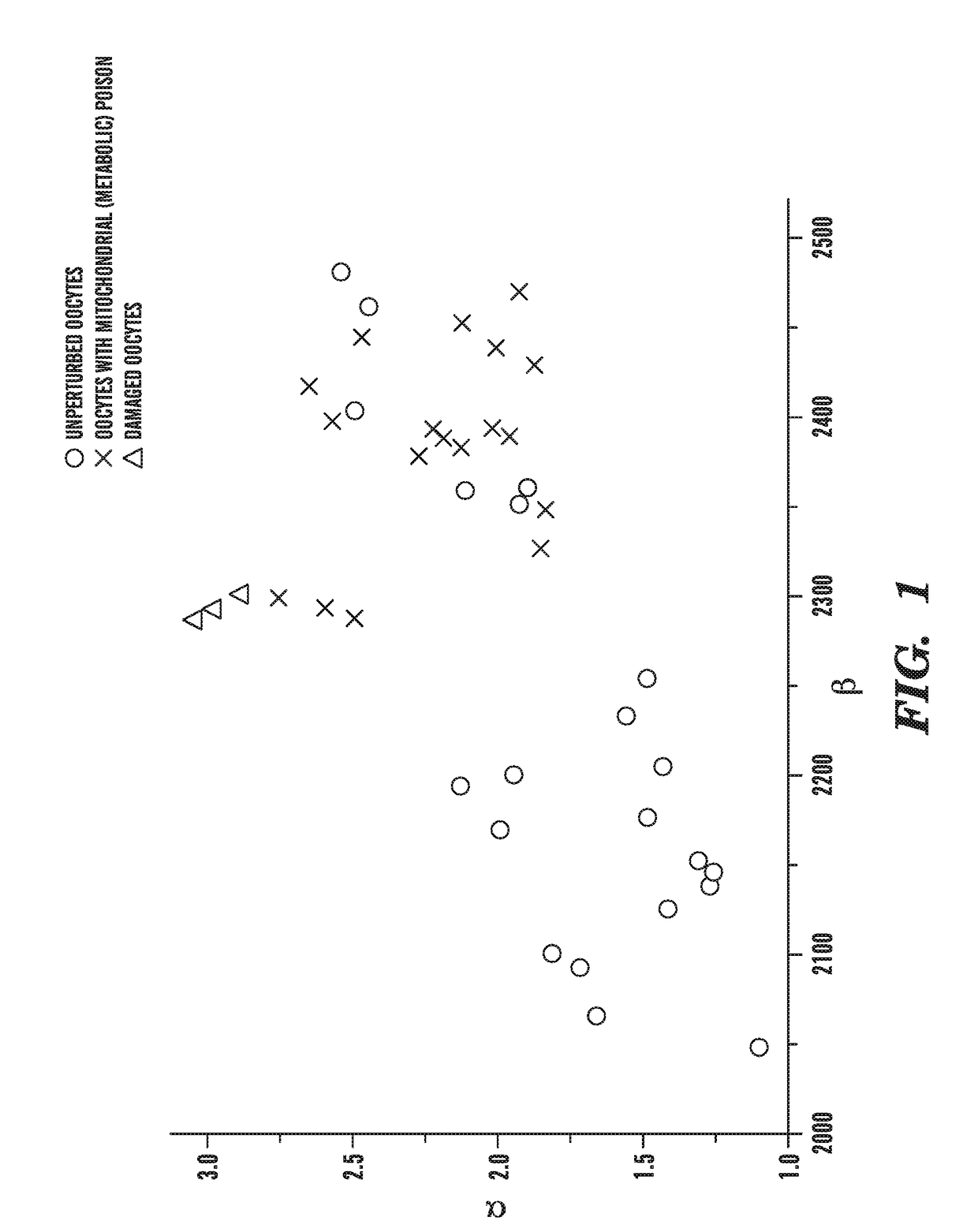Devices, systems, and methods for fluorescence lifetime imaging microscopy
a lifetime imaging and microscopy technology, applied in the field of fluorescence lifetime imaging microscopy devices, systems and methods, can solve the problems of high cost and use of multiple embryos, high rates of multiple gestation, and low success rate of ar
- Summary
- Abstract
- Description
- Claims
- Application Information
AI Technical Summary
Benefits of technology
Problems solved by technology
Method used
Image
Examples
examples
[0097]We obtained preliminary data on FLIM of NADH in mouse oocytes. The preliminary data was acquired on a FLIM system. The microscope consists of a ti-sapphire femtosecond laser (Spectra-Physics), an inverted microscope base (Nikon), a scan head (Becker & Hickl), a hybrid PMT detector (Hamamatsu), and electronics for time correlated single photon counting (Becker & Hickl). This microscope was assembled to acquire the preliminary data.
[0098]Oocytes were placed in a medium on the microscope stage and imaged. A single image of each oocyte was analyzed by averaging the FLIM data over the entire oocyte. The acquired fluorescence lifetime histogram from NADH, averaged over the entire oocyte, was fit to a sum of two exponentials. The parameter alpha, is the ratio of the amplitude of the two exponentials, the parameter, beta, is the lifetime of the longer exponential (in picoseconds).
[0099]Unperturbed oocytes exhibit a range of values of alpha and beta (FIG. 1, circles). As seen in FIG. 1...
PUM
| Property | Measurement | Unit |
|---|---|---|
| wavelength | aaaaa | aaaaa |
| wavelength | aaaaa | aaaaa |
| wavelength | aaaaa | aaaaa |
Abstract
Description
Claims
Application Information
 Login to View More
Login to View More - R&D
- Intellectual Property
- Life Sciences
- Materials
- Tech Scout
- Unparalleled Data Quality
- Higher Quality Content
- 60% Fewer Hallucinations
Browse by: Latest US Patents, China's latest patents, Technical Efficacy Thesaurus, Application Domain, Technology Topic, Popular Technical Reports.
© 2025 PatSnap. All rights reserved.Legal|Privacy policy|Modern Slavery Act Transparency Statement|Sitemap|About US| Contact US: help@patsnap.com

